July in the Greenhouse!
Welcome to Morrifeld’s monthly garden guide where we go undercover to bring you the best tips and tasks for great greenhouse growing! Don’t you just love a mid-winter greenhouse! No matter what the weather is doing outside, your undercover plants remain lush and protected, and grow on regardless. What’s more, harvesting is a breeze – no need to don the raincoat and gummies, and heading out into the mud!
Morrifield’s Gardening Zones
Our long maritime country is filled with exciting microclimates. That means your gardening zone may be quite different to your neighbour’s’ just a few kilometers away. Use our simple descriptions to help gauge which undercover zone sounds like you!
Zone 1 (Warm Winters, Hot Summers)
Zone 2 (Mild Winters, Hot Summers)
Zone 3 (Cold Winters, Mild Summers)
Zone 4 (Severe Winters, Hot Summers)
Top Tasks Around the Country
All Zones
Test drive your commercial compost
If you’re nervous about using commercial compost mixes, we don’t blame you. Over the last 2-3 years, there have been horror stories up and down the country about summer greenhouse vegetable plants collapsing and dying – with many concerned growers pointing the finger at commercial compost as the culprit. If you’re concerned that your new season compost mix may be tainted with the likes of Glyphosate, buy it in now, and test drive it before spring (it can be stored in bags or under a taupaulin until required). To test, source tomato seedlings (or raise your own indoors if you can’t find any at the garden centre), and plant them in the mix you intend to use. Tomato seedlings are highly susceptible to Glyphosate residue so by the time your actual spring seedlings are ready to be planted out, you can reasonably confident about whether the mix you intend using is safe (or not). Tip – just because the mix you test is safe, don’t rely on your next load to be the same – ingredients can differ over time.
Sow your pollinator-plants now!
Flowering plants which attract insect pollinators into the greenhouse are so important. Save yourself dollars by sowing your own in the greenhouse right now. Come mid spring, they’ll be ready to plant in pots which can placed directly outside the door of the greenhouse where they are sure to lure in the good guys. Borage is a favourite with the bumbles. Calendula is hardy (it will flower right through winter in even the coldest places, and the honey bees love it!). Lavender is long-lasting, and doesn’t require a great deal of water in summer. For an early and long lasting pollinator-attractant, grow tree lucerne. It’s so easy to germinate!
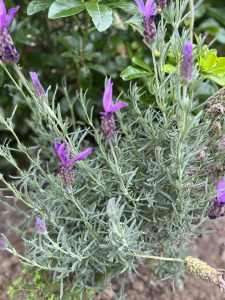
Cuttings cost nothing!
There’s still time to take hard wood cuttings from your shrubs, to grow new plants from them. Choose mature, slender, woody pieces of stem that are around 25cm long. Snip them off your shrub, dip the cut ends in rooting hormone, and push them up to the half way mark in potting mix. (Rooting hormone is available from garden centres – or you can make your own by boiling half a cup of willow bark in a cup of water for 20 minutes, and cooling it thoroughly before using)
Pick a path
Winter is the best time to create a greenhouse path. If you’re not a ‘straight lines’ kind of person, go for a winding path – there are no rules, other than to create as much growing space as possible. If you live in a cold part of the country, choose a material that will absorb heat by day, and return it to the greenhouse at night. Dark gravel chip or rough-surfaced concrete pavers work well (some people opt for brick, but this can become slippery when wet, especially when it gathers algae). If you live in a hot part of the country, choose a light coloured chip, or crushed white shell (but take care – shell can be sharp on the feet). Light coloured material will reflect the heat back out of the greenhouse. Whatever you use, be sure to create an edging to hold back the soil, and always lay weed mat under your paving material.
Totara posts were layed as the pathway in this tunnelhouse
Photo credit- Katie-Jean
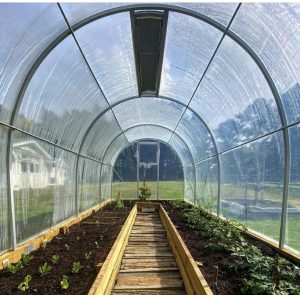
Undercover food forests
Diversity creates a healthy undercover environment, which is why it pays to introduce as many different plants as you are able into your greenhouse. Ornamental and perfumed plants will lure in pollinators, insectivorous plants will help cull aphids and greenfly (try hanging a pitcher plant from the roof of your greenhouse to catch these pests), nitrogen fixers, such as crimson clover, provide a living mulch, and plants such as dwarf comfrey help pull micronutrients into the root zone of your edible plants. There is every reason not to grow a monoculture in your greenhouse!
Photo credit- Lauren Moses in Dunedin uses her tunnelhouse as an undercover food forest
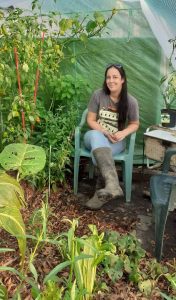
Order your seedlings – and be adventurous!
It’s time to put your feet up, and reach for the seed catalogue! There are so many new varieties of tomatoes, capsicum and chilli to choose from, so let your imagination run wild. But don’t stop there because a greenhouse offers the opportunity to sow exotic plants you may have only ever seen in a National Geographic magazine! Crops like millet, rice and soybean, and aromatics such as peppercorns, fenugreek, cardamom, cumin and vanilla bean bring a new dimension to your greenhouse. Be daring as you plan for the new growing season!
Set the timer
One of the most difficult aspects of greenhouse growing, is knowing exactly when to sow seeds. After all, you don’t want seedlings spending too long in their pots and becoming root bound and leggy before they go in the ground. On the other hand, what could be worse that planting out your seedlings too soon, only to have them hit by an intimidating bout of freezing weather! The secret to success is simple maths! Begin by checking out the date of the last frost frost for the year in your locality (a site such as Weather Spark can help with this). Next, make a Google check to see how long your chosen plant will take to grow from seed to transplanting stage. If, for example, it’s 6 weeks, then you will need to sow seed 6 weeks before the last frost in your region. This is a guide only, but it’s a place to start!
Zones 1 & 2
Oh, baby!
Yippee – we’re past the shortest day of the year! But that doesn’t leave a lot of time for newly sown or transplanted seedlings to mature before the heat-lovers go in the ground. That’s why, from now on, it pays to choose compact and mini varieties for the greenhouse. These little beauties are smaller than their big cousins so they mature more quickly. Even better, they don’t take up so much space so you can cram’m in! For a great choice in compact and mini veg head to Egmont Seeds for the likes of Beetroot ‘Bonny Baby’ (approximately 75 days to maturity), Broccoli ‘Mighty Mini F1 Hybrid (90 days), Cabbage ‘Ranfurly Mini F1 Hybrid’ (75 days), and Cauliflower ‘Majestic Mini F1 Hybrid’ (90 days). If you’re a Kings Seeds fan, check out their compact varieties, as well. And unless you live in one of the coldest parts of the country, sow a sprinkle of baby carrot seed while you’re at it.
Zones 3 & 4
It’s a wrap
A greenhouse will protect most plants from winter cold – but not necessarily if you live in a severe climate. If frost and snow are heavy (or worse – prolonged), take extra precautions with your undercover plants by draping them loosely in one (or two, if necessary) layers of light frost cloth. Woody potted shrubs (such as citrus and Federation Daisy) can be wrapped in a thicker covering of bubble wrap (just remember to leave a space at the top and bottom of the plant for air to circulate). Always be aware that a brief period of unseasonably warm weather can arrive, even in winter, and unwrap plants during the day if this seems a possibility.

Move the Mulch
Help your winter greenhouse soil to dry out and warm up during the day, by pulling back the mulch from the soil. Stack it in one corner if there is space, or bag it up and remove it until it is required again in summer to retain moisture and suppress weeds. Removing mulch also exposes over-wintering pests, and the eggs of snails and slugs.
Sow me undercover now
Zones 1 and 2 Directly into the ground: baby varieties of brassica and beetroot, carrot, lettuce, garlic, microgreens, parsley, radish, spring onion. In seed trays or bags for transplanting or moving outdoors later: broccoli, cabbage, cauli, chives, Florence fennel, lettuce, rocket, silver beet, parcel, perpetual spinach beet, potato, New Zealand spinach.
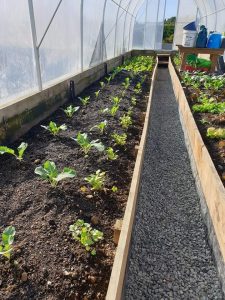
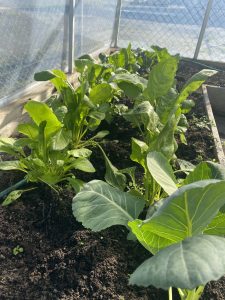
Zone 3 and 4 Directly into the ground: Leafy Asian greens (such as Chinese broccoli ‘Gai Lan’, mibuna, mizuna, pak choi, and tat soi), cool season microgreens, spring onions, ‘Tasty Tendrils’ peas. In bags for transplanting or moving outdoors later: potato.
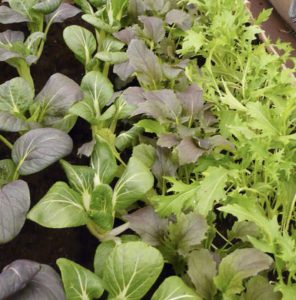
Transplant me undercover now
Zones 1, 2 & 3: Compact and mini varieties of: broccoli, cabbage, and cauli. Kale, leafy Asian greens, lettuce, hybrid spinach, rocket, silver beet.
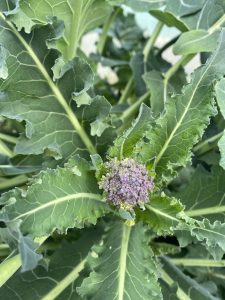
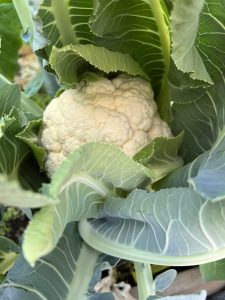
Zones 4: Silver beet, celery, kale.
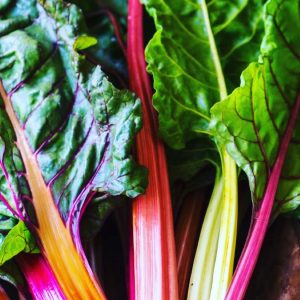
News and views
Lauren Moses of Dunedin, uses her tunnelhouse as an indoor food forest, growing a variety of heat loving plants including a container-grown Banana plant which she brings indoors for Winter. Thats a huge achievement in a Southern city!
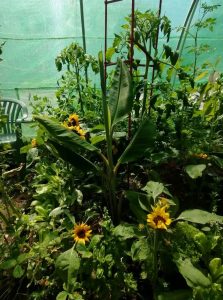
Photo credit-Lauren Moses, Dunedin
